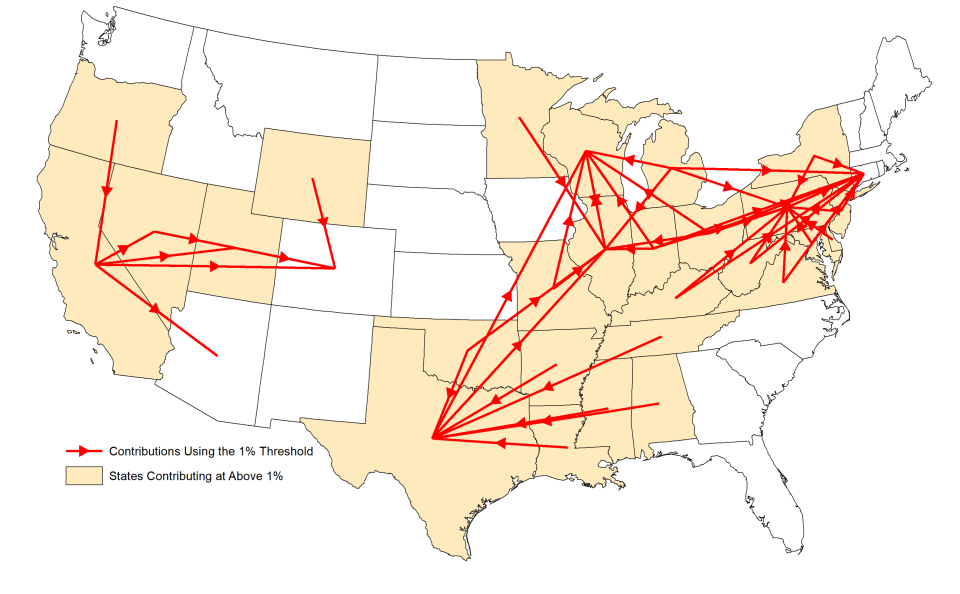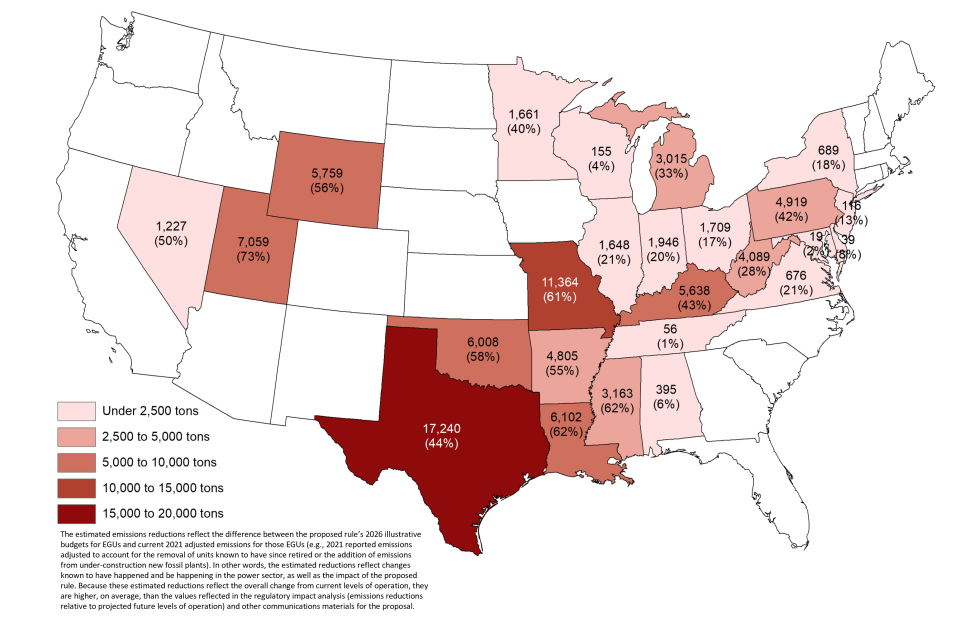The U.S. Environmental Protection Agency will seek to ensure pollution sources act as “good neighbors” to downwind states by tightening restrictions on emissions that increase the amount of smog there.
The EPA’s proposed Cross-State Air Pollution Rule for the 2015 Ozone National Ambient Air Quality Standard would tighten emissions of nitrogen oxides, chemicals involved in the creation of smog.
Nitrogen oxides, especially nitrogen dioxide, enter the atmosphere through the burning of fossil fuels, like coal and oil. The gases can irritate airways in humans and aggravate heart and lung conditions. Long term exposure can contribute to the development of asthma and increase susceptibility to respiratory infections, including those triggered by COVID-19.

The rule would reduce nitrogen dioxide budgets for fossil fuel-fired power plants in Indiana and 24 states beginning in 2023.
By 2026, it would also tighten budgets for some additional industrial stationary sources, like cement manufacturing kilns and boilers and furnaces used to manufacture steel, coal and paper products.
The changes in the proposed rule would reduce the amount of nitrogen dioxide emitted by U.S. power plants by 20% and other industrial sources by 15%, according to the EPA.

“Following the science and the law, this ‘good neighbor’ plan will better protect the health of Americans across the country,” said EPA Administrator Michael S. Regan. “Air pollution doesn’t stop at the state line. This step will help our state partners meet air quality health standards, saving lives and improving public health in smog-affected communities across the United States.”
The EPA’s proposed rule would include an official determination that emissions from 26 states, including Indiana, “significantly contribute” to air quality in states downwind by interfering with their ability to meet the 2015 ozone standard based on nitrogen oxide emissions.

That would allow the EPA to establish federal implementation plans for 25 states that would tighten the amount of nitrogen oxides power plants are allowed to emit, known as emissions budgets, between 2023 and 2026.
The plants may continue allowance-based trading, the mechanism through which lower-polluting plants can sell their unused budget credits to higher-polluting plants.
The EPA would also establish nitrogen oxides emissions limitations on reciprocating engines used during the transportation of natural gas in pipelines, kilns used for cement production, boilers and furnaces in iron and steel mills, furnaces in glass manufacturing, and high-emitting equipment and large boilers used in chemical, petroleum, coal and paper manufacturing.
According to data from the Indiana Department of Environmental Management, nitrogen dioxide levels in the state were on a downward trend between 2010 and 2016.
In 2015, the federal ozone standard was implemented, but states were given several years to come into compliance and present their plans to comply with the new standard.
Beginning in 2017, a rise in nitrogen dioxide levels was detected at two of the state’s five nitrogen dioxide monitoring stations in Indianapolis and South Bend, a trend that continues today.
The proposed rule is the result of a lawsuit filed by various national and local environmental organizations from across the nation that said the Trump administration violated the “good neighbor” provision in the Clean Air Act. The provision requires the EPA and states to address interstate transport of air pollution that affects downwind states’ ability to meet federal air quality standards.
Some of the groups involved in the lawsuit said they supported the EPA’s proposed rule.
“This is progress,” said John Walke, clean air director for the Natural Resources Defense Council. “Ozone pollution harms millions of people, including the country’s most vulnerable — children, communities of color, low-income communities, and older people. EPA is taking important steps to protect residents of downwind states from unsafe levels of smog pollution, because upwind polluting industries have failed to reduce harmful air pollution. We will urge EPA to take the strongest action that science and the law will support."
In the lawsuit, the groups claimed the Trump administration failed to approve or disapprove implementation plans from 32 states that detailed what actions each would take to meet the epa.gov/ground-level-ozone-pollution/timeline-ozone-national-ambient-air-quality-standards-naaqs 2015 federal standard for ozone within the one-year deadline set by the law.
The state of Indiana submitted its state implementation plan in 2018, but the EPA never acted on it or the dozens of other plans submitted by the states.
The plan was never approved or rejected by the fossil fuel-friendly Trump administration, effectively blocking the federal government from stepping in to enforce the 2015 ozone standard by putting in place a federal implementation plan for each of those states.
The groups filed their lawsuit in May 2021, asking a federal court to force the EPA to make decisions on the state plans and enjoin the EPA administrator from continuing to block federal action.
In January, the EPA settled the suit, agreeing to make a decision on the plans submitted by states by the end of 2022.
The EPA will soon publish the proposed rule in the Federal Register and accept comments for 30 days. The agency will also hold a virtual public hearing on the rule 15 days after the rule is published.